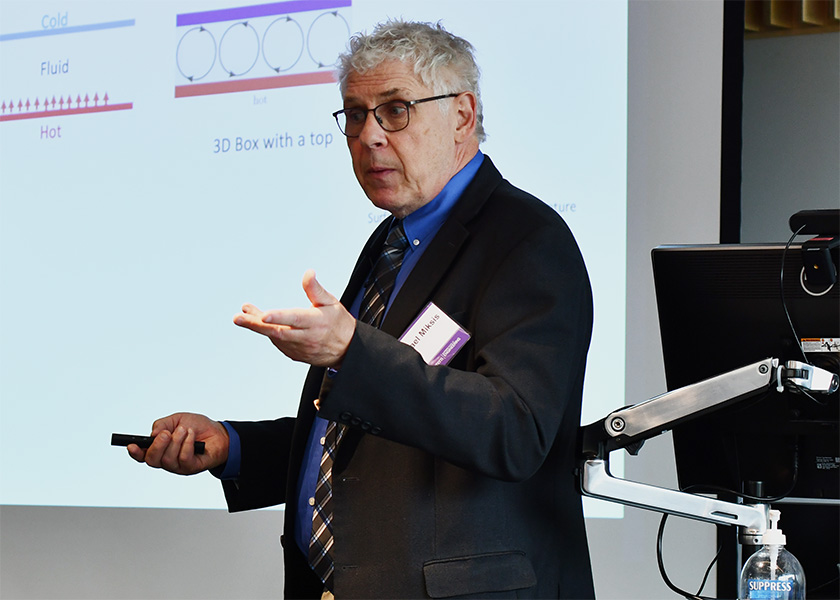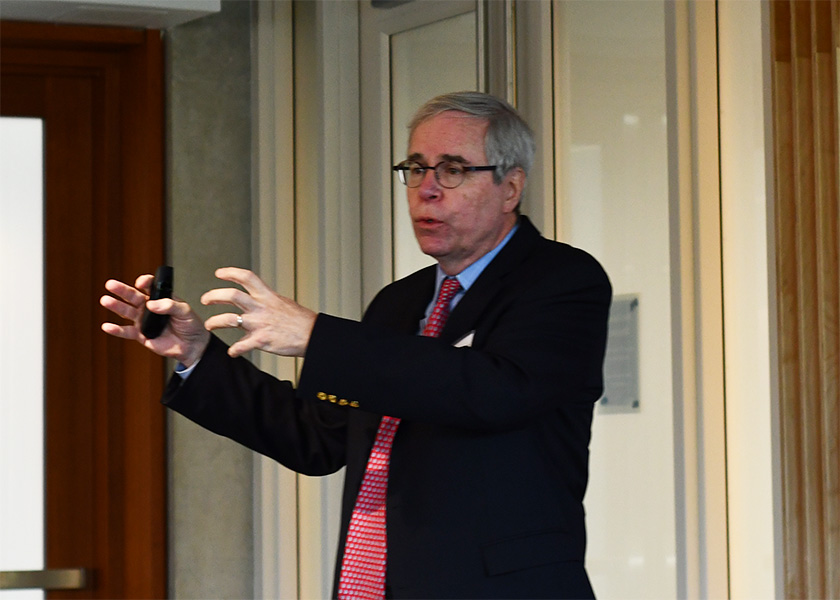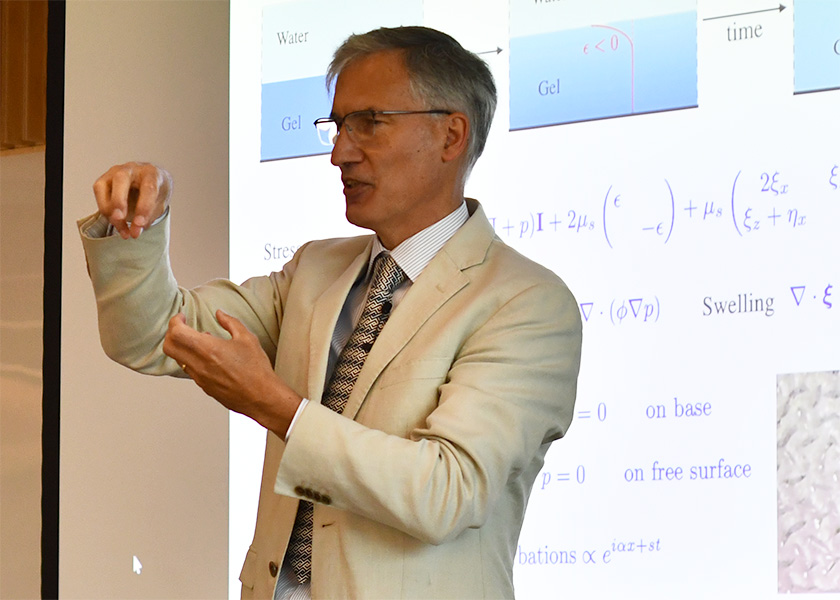Stephen Davis’s Memory Present at Symposium in his Honor
Cambridge’s Grae Worster delivered the keynote address
Stephen H. Davis passed away on November 12, 2021, but his memory and impact was felt at the first symposium held in his honor after his death last year.
Hosted May 25 at the Ford Motor Company Engineering Design Center, the 2022 Stephen H. Davis Symposium featured a keynote speech delivered by Cambridge University professor Grae Worster. Prior to that talk, Northwestern Engineering’s Michael Miksis and Peter Voorhees recited Davis’s extensive contributions to research, to the University, and to the wider academic community. All three presenters incorporated humor and personal memories of their friend and colleague.
Davis, Walter P. Murphy Professor Emeritus of Engineering Sciences and Applied Mathematics, was a pioneer in fluid dynamics research. He authored four books and more than 200 academic publications about his work. He also earned election to the National Academy of Engineering, American Academy of Arts and Sciences, and the National Academy of Sciences, among other honors.

“I’ve been asked to review Steve’s work in fluid mechanics in 20 minutes,” said Miksis, professor of engineering sciences and applied mathematics at the McCormick School of Engineering. “So, if I talk fast, you’ll understand why.”
During his speech, Miksis recalled Davis’s love of top-quality restaurants, scotch whisky, and his passion for the New York Yankees. When he was preparing his remarks, Miksis visited Davis’s still-intact office to find out what Davis thought were his most important contributions.
The bookcases were filled with an almost complete set of editions of the Journal of Fluid Mechanics, which Davis led from 2000–2010, student theses, and books Davis wrote, edited, or were dedicated to him. Miksis also shared some of the research photos displayed on the walls. They included images of thermal convection, thin films, and contact-line motion.
“When I started thinking about this, I said, ‘Well, Steve did a lot of things. This is going to be easy,’” Miksis said. “Then it occurred to me: Steve did a lot of things. This is going to be hard.”

Indeed, Davis did a lot to push fluid dynamics forward, and he also was an important figure in materials science research.
Voorhees, Frank C. Engelhart Professor and Chair of Materials Science and Engineering at the McCormick School of Engineering, highlighted Davis’s contributions in that area. Voorhees remembered that Davis was at the intersection of fields.
“It’s clear that (materials science) was an important part of his research for many years,” Voorhees said.
One of the major recent developments in the materials science community is the onset of additive manufacturing, a process that allows the production of custom-designed components of orthopedic objects and other complicated structures. Davis’s work on rapid solidification brought insights into how the powders used in additive manufacturing can strengthen, allowing them to be useful and dependable.

Beyond that, Davis published more than 80 articles about materials science. Davis, Voorhees said, stressed the importance of modeling in applied mathematics, and that thread ran through his research.
“His work has had a major impact on materials science and engineering,” Voorhees said. “It continues to have a major impact. They’re classics in the field. They will be read well into the future. In fact, his work in materials has gone the other way and influenced applied mathematics.”
Lasting memories
Worster, who worked as an assistant professor at Northwestern from 1989 to 1992 with dual appointments in ESAM and chemical engineering and was brought to the University in part by Davis, gave the talk “The Dynamics of Super-absorbent Hydrogels.” He outlined how he and his colleagues have developed a new mathematical approach to model super-absorbent hydrogels, allowing for strongly nonlinear swelling while remaining linear in deviatoric strains, in effect treating hydrogels as instantaneously incompressible, linear elastic materials. The Cambridge professor even brought examples of hydrogels, passing them around during his lecture so the audience could feel them with their hands.
Worster described this model and illustrated its features by solving simple examples of swelling spheres and transpiration through cylinders, and by analyzing different instabilities that can arise during swelling. Worster also introduced a hypothesis for a potential role of hydrogels in pumping water up very tall trees.
Worster also shared personal memories of Davis, who mentored him when he was at Northwestern.
The two met at a small workshop about solidification a couple years before Worster went to Northwestern and forged a bond. Worster humorously recalled how, when they worked together, the two settled on holding a conference in Chamonix, France, before figuring out what the event would cover.
“It was a very inspiring time for me,” Worster said of his stay at Northwestern. “It was a short period, three years, but I really learned a lot, not only from Steve, but his colleagues.”